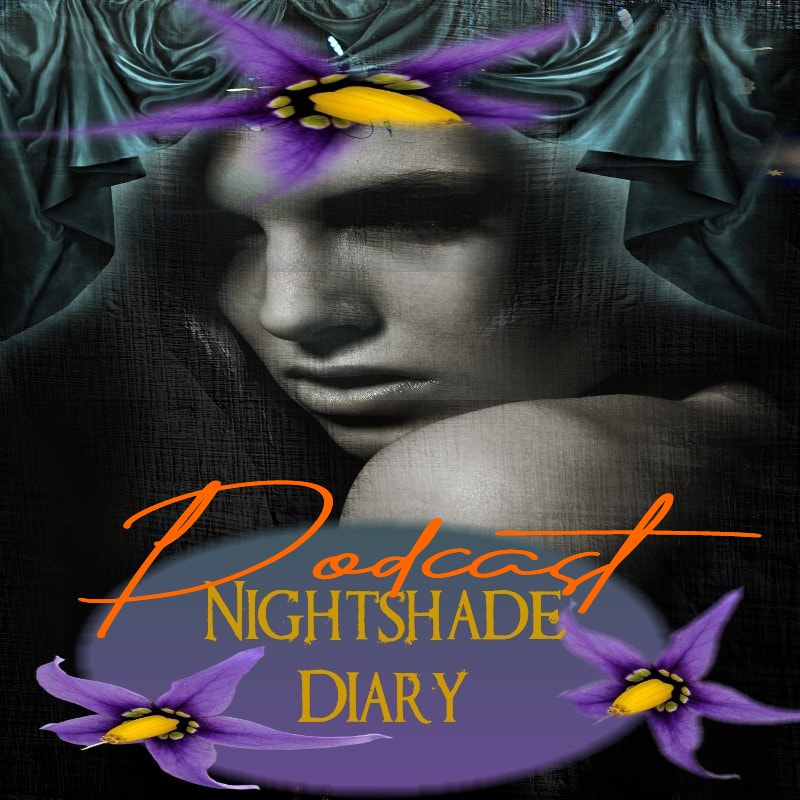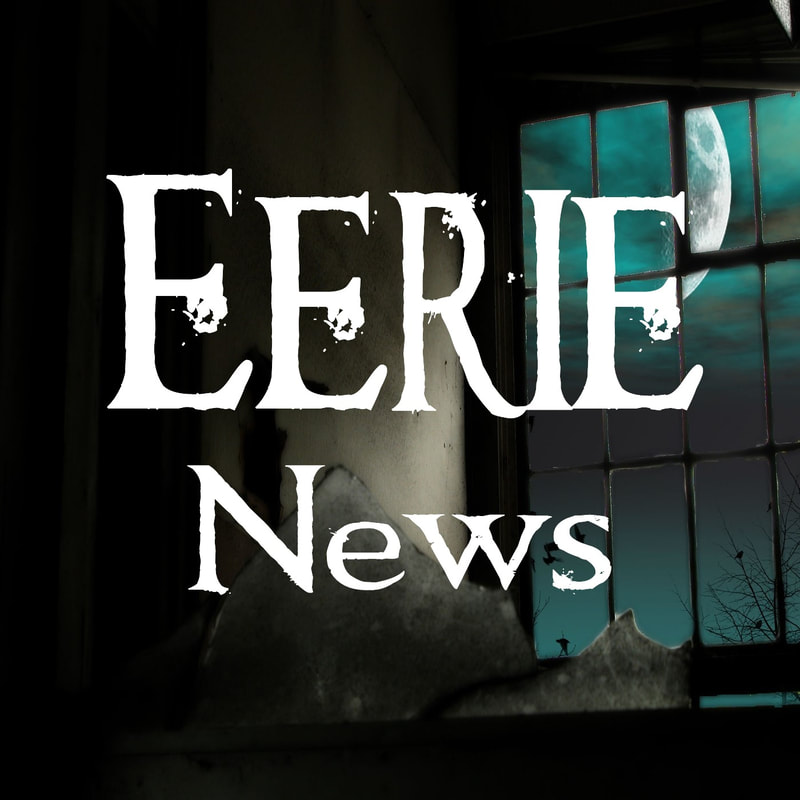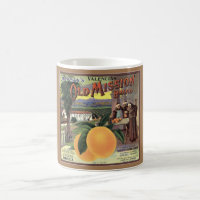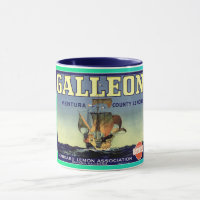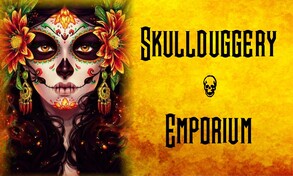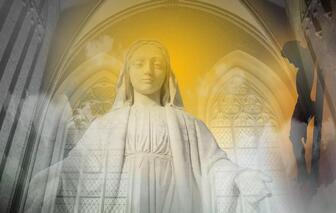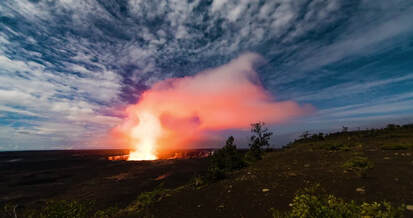 By M.P. Pellicer | Eerie.News The Kilauea volcano erupted on June 7, 2023, but this is not the first time. In 1997, a lava flow destroyed a 700- year old temple where human sacrifices were carried out.  Depiction of Wahaula Heiau Depiction of Wahaula Heiau Kīlauea is the most active volcano on the island of Hawaii, and one of the most active in the world. The volcano is known as the home of the goddess Pele (Pelehonuamea), where she resides in a persistently active crater known as Halemaumau. In 1997, Kilauea spewed forth lava that inched toward Wahaula Heiau, which in ancient times was known as Ahaʻula. This was the first sacrificial temple built on Hawaii by Paao natives. The five-foot high walls surrounding it did not stop the lava. Prior to this, many thought Pele would spare the temple. The origins of the temple are tied to the legend of Paao who came to Hawaii from Tahiti or Samoa in the 13th century. Archeologists believe this individual did not exist. Natives believe he was the one responsible for introducing the custom of the luakini heiau. Hieaus are sacred places where human and animal blood sacrifices were offered. Whether he existed or not, he is credited with erecting the temple near Wahaula (Red Mouth). Only royalty could worship at this temple until 1819, however even female royal members were not allowed beyond the first terrace. King Kamehameha I (died 1819) dedicated the place to the war god Kuka'illimoku.  Illustration of ritualized human sacrifice in traditional Hawaiian culture, as documented by the French explorer and artist Jacques Arago c. 1819. Illustration of ritualized human sacrifice in traditional Hawaiian culture, as documented by the French explorer and artist Jacques Arago c. 1819. Prior to Paao's arrival and the changes he made to religious practice and worship rituals, ceremonies conducted by the high chief and his priest could be observed by the congregation. Paao designed the temples with high stone walls, which would hide the ceremonies from the masses. Paao also instituted hereditary priesthood and wooden temple images. The Wahaula Heiau was so forbidden that the smoke of its fires that fell upon any person or a chief would be punishable by death. It would be seen as a sacrifice to the gods of the temple. Human sacrifices would always be killed in the main entrance to the heiau. Mo'okini Heiau at Kohala was the second temple Paao ordered to be constructed. Prior to the arrival of Christian missionaries the chiefs destroyed the grass houses where the priests lived. They burned the wooden idols, images on the wall and anything combustible leaving only the walls and the stone floors. The last sacrifice is believed to have occurred in 1809, when Kaahumanu married to King Kamehameha for 34 years, took as her lover 19-year-old Kanihonui. The young man was put to death by strangulation at Papaʻenaʻena Heiau on Leʻahi (Diamond Head) for committing adultery with Kaʻahumanu. Even though human sacrifices stopped in the early 19th century evidence of the practice could still be found in areas around the heiau. “At our visit to the scene we were shown the small cove, deep down the jagged bluffs of Puna’s coast line, at the southern end of Wahaʻula premises, where the bones of the slain were washed, and to this day is known as Holoinaiwi.” (Thrum, 1904) 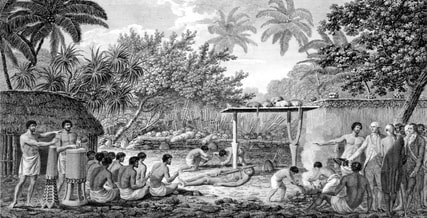 Captain James Cook witnessed human sacrifice in Taihiti during his visit around 1773. (Source - 1815 edition of Cook's 'Voyages') Captain James Cook witnessed human sacrifice in Taihiti during his visit around 1773. (Source - 1815 edition of Cook's 'Voyages') Along the North Kohala coast is the Mo'okini Luakini Heiau, a temple dedicated for the purpose of human sacrifice. It is believed to have been constructed around 480 A.D. with a six-foot high wall surrounded it. Around 1,000 to 1,300 A.D. religious traditions changed to include human sacrifice. It's estimated that thousands were killed at the temple. They were flayed and their bones used for practical purposes such as creating a fish hook. 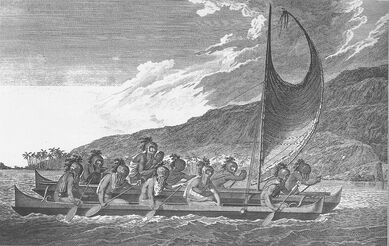 Hawaiian priests traveling across the bay for first contact rituals (Artist: John Webber, artist aboard Cook's ship) Hawaiian priests traveling across the bay for first contact rituals (Artist: John Webber, artist aboard Cook's ship) But this was not the only site dedicated to human sacrifice. There is Hale O Kapuni just offshore in Pelekane Bay that was used to propitiate the shark god Kauhuhu that was worshiped as a protector. The victims were taken to a stone in the ocean where they were left to be eaten by sharks. The last sighting of the ruins was during low tide in the 1950s. It is now underwater in what is purported to be a breeding ground for sharks. There was a chief named Alapa'i who would sit on a rock in the shade of a large kiawe tree on the shore above Mailekini Heiau. He was known to use human flesh for shark bait, and would watch from this point as sharks would come to eat the human remains left as offerings for them. Some high chiefs would catch sharks as a sport, and this custom suggests they conditioned the sharks to eat the human flesh in the offshore temple so they could be easily noosed. 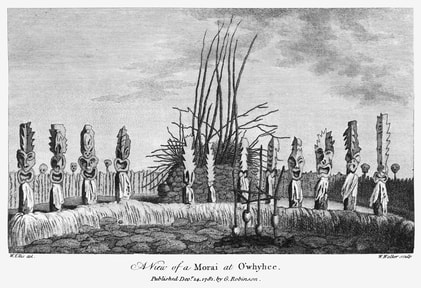 Morai at Kealakekua Bay (William Ellis c.1782) Morai at Kealakekua Bay (William Ellis c.1782) There were different occasions that demanded a sacrifice. It could be as mundane as the construction of a house or canoe, in preparation for war, to end pestilence and breaking any societal taboos. Victims were sacrificed by strangulation, bludgeoning, burning, burial, drowning, being crushed under a newly-built canoe, and decapitation. Some believe the practice of human sacrifice was used to enforce a strict class system, and inhibit any type of egalitarian structure among the populace. It is no surprise to find that sacrificial victims were often of a lower class including slaves. The enforcers were chiefs and high priests. There was also a belief that chiefs and kings were part of a superior god-like race. Regardless of class, offending a social elite could be punishable by death as part of a sacrifice. The elite were not always judged by this strict law, even when it came to breaking taboos. A wealthy person could pay reparation instead of being directly punished, they would just substitute the life of a slave for their own if they had broken a major taboo. As an example in 1804, Kamehameha was en-route to invade Kauai, and with an army of 8,000 men he stopped at O'ahu. Yellow fever broke out among the men and within a few days over 65-percent of his troops were dead. Kamehameha supposed this could be repaired by a sacrifice and he went to the heiau at Whtiti. It was described by the Journal of Tyerman And Bennet, 1832, this way: The priests recommended a ten days’ tabu, the sacrifice of three human victims, four hundred hogs, as many cocoa-nuts, and an equal number of branches of plantains. 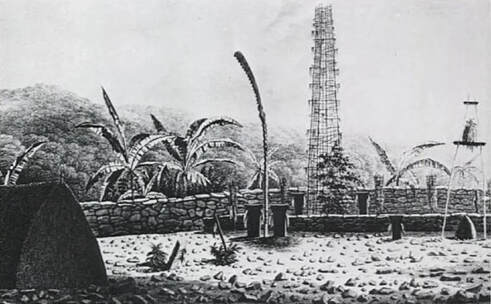 Heiau at Waimea by John Webber c.1778-79 Heiau at Waimea by John Webber c.1778-79 Ancient Hawaii had a caste system with the high-ranking class known as ali'i to the commoners or maka’ainana. A middle class was the konohiki. Priests (kahunas) had a different status altogether. The lowest of all were the kauwa or untouchables. They were born into this class and were strongly despised. They would be punished with death if they ate, slept or let their shadow fall on an ordinary person. Unlike other cultures, a child's status was mostly determined by the mother's rank, and it would not be hurt if the father's was lower than the mother. Kapu was a system of prohibitions and prescriptions. The most important was held by the chief which required others of lower ranks to immediately lie face down upon the ground in their presence. The penalty of disobedience was death. 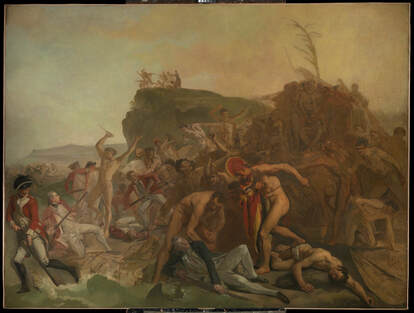 The death of Captain Cook c.1780 The death of Captain Cook c.1780 Most Polynesian societies allowed marriage with others in their same status, however in Hawaii a high chief would be wed to the nearest possible female relative, which included marriage between brothers and sisters. This was dubbed “Hawaiian royal incest” (marriage between blood relatives of the first degree among the ali’i). Children born of the union would be of highest rank equal to those of the gods. The most perfect and revered union was that of a full brother and sister of the highest rank. Hiklau Heiau at Kealakekua Bay was visited by Captain James Cook in 1778-1779. At this time the place was known as the Sandwich Islands. It is the site of a luakini heiau which measured 250 feet long by 100 feet wide. Cook performed the first Christian ceremony in Hawaii which was a funeral rite for one of his crew. 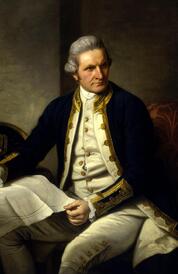 Capt James Cook Capt James Cook Cook stayed there a month. At first the natives had seen Cook as an incarnation of their god Lono, but when the ship returned three weeks later because a mast had broken, the natives realized there was nothing divine about them. In addition the funeral ceremony performed by Cook confirmed that they were mortal. A boat from Cook's ship the Discovery disappeared and his crew took a local man hostage. Kalani'opu'u, a high chief came to the ship to discuss the situation, and it's believed that Cook decided to take him hostage instead. This resulted in the natives gathering on the beach, many with weapons and chasing the English off the bay.  Cook Monument on the northern shore of the bay Cook Monument on the northern shore of the bay A skirmish broke out and Cook was stabbed to death in the shallow waters off the shore. Four crew men were killed as well as 16 Hawaiians. William Bligh, years before he became commander of the HMS Bounty, claimed to have watched from the Resolution as Cook's body was dragged up a hill, and taken to a village where it was torn to pieces. There were rumors that Cook had been cannibalized, but this was not a practice of the natives. It is believed his body was prepared the same as a chief. This was done by disemboweling the torso and then baking the body to remove the flesh. The bones were prepared with care since they are are considered sacred in Hawaiian culture. Cook's bones were given out among the villages. Some of his remains were returned to the crew of the Resolution which gave him a burial at sea. This had been Cook's third expedition.  Evidence of human sacrifice was found at a ruined heaiu in Kona c.1908 Evidence of human sacrifice was found at a ruined heaiu in Kona c.1908 In 1908, skulls and skeletons, remains of human sacrifice were discovered at a ruined heiau in Kona, not far from where Captain Cook was killed. In August, 2023, Lahaina was ravaged by fires, which grew rapidly from the winds stirred by Hurricane Dora hundreds of miles away. After a month the exact number of those killed is not certain, and fingers have been pointed at the government, utility companies and the police department for not warning the residents, and impeding their exit from the area. Many jumped into the ocean in order to save themselves. Over 2,000 structures were destroyed, and over 2,000 acres were burned as of August 11, 2023. Much of the historic Lahaina Historic District was damaged. Lahaina was destroyed by fire on New Year's Day 1919, and more than 30 buildings were burned, but this destruction far outstrips anything from the past.  Waiola Church with graves of ancient chiefs in the foreground c.1909 (Source - Images of Old Hawaii) Waiola Church with graves of ancient chiefs in the foreground c.1909 (Source - Images of Old Hawaii) The Waiola Church (originally the Wainee Church) dedicated in 1832, lost its main sanctuary, annex and social hall. "The church’s cemetery is the final resting place for early members of the royal family of the Kingdom of Hawaii." Missionaries and native Hawaiians were buried side by side. The church is immortalized in James Michener’s Hawai‘i (as Reverend Abner Hale’s church in Lāhainā.) The body of Keōpūolani, wife of Kamehameha the Great and mother of Kamehameha II, and Kamehameha III is buried there. She and Ka‘ahumanu were largely responsible for the abolition of the kapu system. Keōpūolani is said to have been the first convert of the missionaries in the islands, receiving baptism from Rev. William Ellis in Lāhainā on September 16, 1823. It is also the final resting place for King Kaumuali‘i, Queen Kalākua, Princess Nahiʻenaʻena, Governor Hoapili and Governess Liliha. Here, too, is buried the Rev. William Richards, a pioneer missionary and advisor to the Hawaiian monarchy. Maria Lanakila Catholic Church’s whose patroness is Mary, Our Lady of Victory sustained damage to its roof. The Pioneer Inn constructed by George Alan Freeland in 1901, was destroyed. The Old Lahaina Courthouse, which operated since 1860, first as a customs house for trade and whaling ships and then as a courthouse was heavily damaged. The Maui Fires have borne fears and suspicions that they were set on purpose, in order to gain ownership over the swaths of land burned to a crisp that were mostly held by native Hawaiians, and which are estimated to be worth billions of dollars. A month after fires ravaged Maui, Kilauea is active once again. On September 11, 2023, Kilauea erupted. Volcanic smog was observed downwind of the volcano. The alert level was raised to warning status, and the aviation color code went to red as scientists evaluated the hazards of the eruption. Many of the circumstances that allowed the fire to claim so many lives and property are still under investigation.
0 Comments
Your comment will be posted after it is approved.
Leave a Reply. |
Stranger Than Fiction StoriesM.P. PellicerAuthor, Narrator and Producer Archives
July 2024
Categories
All
|
Stories of the Supernatural
- Stories of the Supernatural
- Miami Ghost Chronicles
- M.P. Pellicer | Author
- Stranger Than Fiction Stories
- Eerie News
- Supernatural Storytime
-
Astrology Today
- Tarot
- Horoscope
- Zodiac
-
Haunted Places
- Animal Hauntings
- Belleview Biltmore Hotel
- Bobby Mackey's Honky Tonk
- Brookdale Lodge
- Chacachacare Island
- Coral Castle
- Drayton Hall Plantation
- Jonathan Dickinson State Park
- Kreischer Mansion
- Miami Biltmore Hotel
- Miami Forgotten Properties
- Myrtles Plantation
- Pinewood Cemetery
- Rolling Hills Asylum
- St. Ann's Retreat
- Stranahan Cromartie House
- The Devil Tree
- Trans-Allegheny Lunatic Asylum
- West Virginia Penitentiary
- Paranormal Podcasts
"When misguided public opinion honors what is despicable and despises what is honorable, punishes virtue and rewards vice, encourages what is harmful and discourages what is useful, applauds falsehood and smothers truth under indifference or insult, a nation turns its back on progress and can be restored only by the terrible lessons of catastrophe."
- Frederic Bastiat
- Frederic Bastiat

Copyright © 2009-2024 Eleventh Hour LLC. All Rights Reserved ®
DISCLAIMER
DISCLAIMER
 RSS Feed
RSS Feed


